772d Expeditionary Airlift Squadron
| 772d Expeditionary Airlift Squadron | |
|---|---|
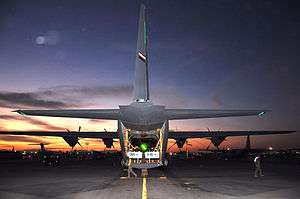 A 772 Expeditionary Airlift Squadron C-130J at Kandahar Airfield is loaded with supplies to be airdropped 15 November 2012 | |
| Active | 1943–1945; 1953–1971; 1972–1993; unknown-present |
| Country |
|
| Branch |
|
| Role | Airlift |
| Part of | Air Combat Command |
| Nickname(s) | The Hallmark Squadron |
| Motto(s) | If You Care Enough Send the Best |
| Engagements |
|
| Decorations |
|
| Insignia | |
| Emblem of the 772d Expeditionary Airlift Squadron emblem (approved 7 July 1972)[1] |
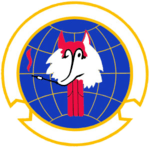 |
| 772d Troop Carrier Squadron emblem |
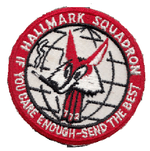 |
| 772d Bombardment Squadron emblem[2] |
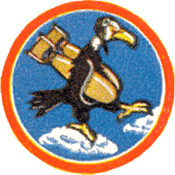 |
The 772d Expeditionary Airlift Squadron is a provisional United States Air Force unit, assigned to Air Combat Command. It is deployed with the 451st Air Expeditionary Wing, Kandahar Airfield, Afghanistan.[3]
During World War II, the 772d Bombardment Squadron was a B-17 Flying Fortress squadron, assigned to the 463d Bombardment Group, Fifteenth Air Force. It earned Two Distinguished Unit Citations. The unit later served as a C-130 Hercules tactical airlift squadron during the Vietnam War.
Mission
The squadron provides airlift to forces engaged in the Global War on Terrorism.
History
Established in mid-1943 as a B-17 Flying Fortress heavy bombardment squadron; assigned to Second Air Force for training. Attached in late 1943 and early 1944 to Air University Army Air Force School of Applied Tactics. Deployed to Mediterranean Theater of Operations (MTO) in February 1944, squadron taking the South Atlantic Transport Route though the Caribbean and South America; transiting the Atlantic Ocean via Brazil and Dakar, French West Africa, being assigned to Fifteenth Air Force in March 1944 at several airfields in Southern Italy.
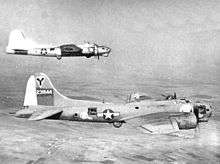
Engaged in long-range strategic bombardment of enemy military, industrial and transport targets, including oil refineries and production oilfields in Italy; France; Southern Germany; Austria and the Balkans. Continued strategic bombardment until German capitulation in May 1945. Demobilized in place in Italy during the summer of 1945; inactivated in September 1945.
Reactivated as a Tactical Air Command Troop Carrier squadron in June 1953, assigned C-119 Flying Boxcars. Engaged in transport of equipment and supplies; including support of Army Airborne parachute units throughout the 1950s and early 1960s. Equipped with new C-130A Hercules in 1956.
Deployed to Pacific Air Forces in 1966, being stationed in the Philippines. Engaged in airlift missions between the Philippines and South Vietnam, airlifting supplies and equipment to airfields in the combat areas; evacuating wounded personnel to hospitals at Clark Air Base. Remained in the Western Pacific until 1971 when inactivated as part of the drawdown of United States forces in the region.
Reactivated at Dyess AFB, Texas as a theater airlift squadron in June 1972, initially under Tactical Air Command, later Military Airlift Command and lastly Air Mobility Command. Deployed frequently to Europe or the Pacific, performing intra-theater airlift missions with C-130s. Inactivated in October 1993 as part of the drawdown of the USAF after the end of the Cold War.
Reactivated as a provisional expeditionary airlift squadron in 2001 as a result of the 9/11 attacks and subsequent Global War on Terrorism. Activities and stations are undetermined.
Lineage
- Constituted 772d Bombardment Squadron (Heavy) on 19 May 1943
- Activated on 1 August 1943
- Redesignated 772d Bombardment Squadron, Heavy c. 29 September 1944
- Inactivated on 25 September 1945
- Redesignated 772d Troop Carrier Squadron, Medium on 1 December 1952
- Activated on 16 January 1953
- Redesignated: 772d Troop Carrier Squadron, Assault on 18 December 1961
- Redesignated: 772d Troop Carrier Squadron, Medium on 15 May 1965
- Redesignated: 772d Troop Carrier Squadron on 1 January 1967
- Redesignated: 772d Tactical Airlift Squadron on 1 August 1967
- Inactivated on 15 June 1971. Activated on 1 June 1972
- Redesignated 772d Airlift Squadron on 1 November 1991
- Inactivated on 1 October 1993
- Redesignated 772d Expeditionary Airlift Squadron and converted to provisional status on 4 December 2001[1]
Assignments
- 463d Bombardment Group, 1 August 1943 – 25 September 1945
- 463d Troop Carrier Group, 16 January 1953
- 463d Troop Carrier Wing, 25 September 1957
- 840th Air Division, 23 November 1965
- 463d Troop Carrier Wing (later 463d Tactical Airlift Wing), 7 February 1966 – 15 June 1971
- 463d Tactical Airlift Wing, 1 June 1972
- Attached to: 513th Tactical Airlift Wing, 9 July – 15 September 1972 and 10 November 1972 – 10 January 1973, 5 January – 15 March 1975 and 3 November 1975 – 15 January 1976; 374th Tactical Airlift Wing, 6 May – 4 June 1973; 322d Tactical Airlift Wing, 5 February – 8 April 1974, 3 August – 15 October 1976; 313th Tactical Airlift Group, 3 November 1977 – 7 January 1978, 3 April – 5 June 1979, 3 August – 5 October 1980, 3 December 1981 – 13 February 1982, 4 April – 7 June 1983; 5 June – 4 August 1984; 10 October – 7 December 1985, 4 June – 12 August 1987, 4 August – 13 October 1988, and 4 October – 12 December 1989
- 463d Operations Group, 1 November 1991 – 1 October 1993
- Air Combat Command to activate or inactivate at any time after 4 December 2001[1]
Stations
|
|
Aircraft
- B-17 Flying Fortress, 1943–1945
- C-119 Flying Boxcar, 1953–1957
- C-130 Hercules, 1956–1971; 1972–present
See also
References
Notes
- 1 2 3 4 5 6 Bailey, Carl E. (December 3, 2009). "Factsheet 31 Fighter Wing (USAFE)". Air Force Historical Research Agency. Retrieved August 29, 2018.
- ↑ Watkins, pp. 110-111
- ↑ "New day, new job for Expeditionary Airlift Squadron at Kandahar". Archived from the original on 14 July 2014. Retrieved 8 July 2014.
Bibliography
![]()
- Maurer, Maurer, ed. (1983) [1961]. Air Force Combat Units of World War II (PDF) (reprint ed.). Washington, DC: Office of Air Force History. ISBN 0-912799-02-1. LCCN 61060979. Retrieved December 17, 2016.
- Maurer, Maurer, ed. (1982) [1969]. Combat Squadrons of the Air Force, World War II (PDF) (reprint ed.). Washington, DC: Office of Air Force History. ISBN 0-405-12194-6. LCCN 70605402. OCLC 72556. Retrieved December 17, 2016.
- Ravenstein, Charles A. (1984). Air Force Combat Wings, Lineage & Honors Histories 1947-1977 (PDF). Washington, DC: Office of Air Force History. ISBN 0-912799-12-9. Retrieved December 17, 2016.
- Watkins, Robert A. (2009). Insignia and Aircraft Markings of the U.S. Army Air Force In World War II. Volume IV, European-African-Middle Eastern Theater of Operations. Atglen,PA: Shiffer Publishing, Ltd. ISBN 978-0-7643-3401-6.
External links
- "C-130 Dyess timeline". Abeline Reporter News. 23 April 2011. Archived from the original on 12 August 2011. Retrieved 29 January 2014.